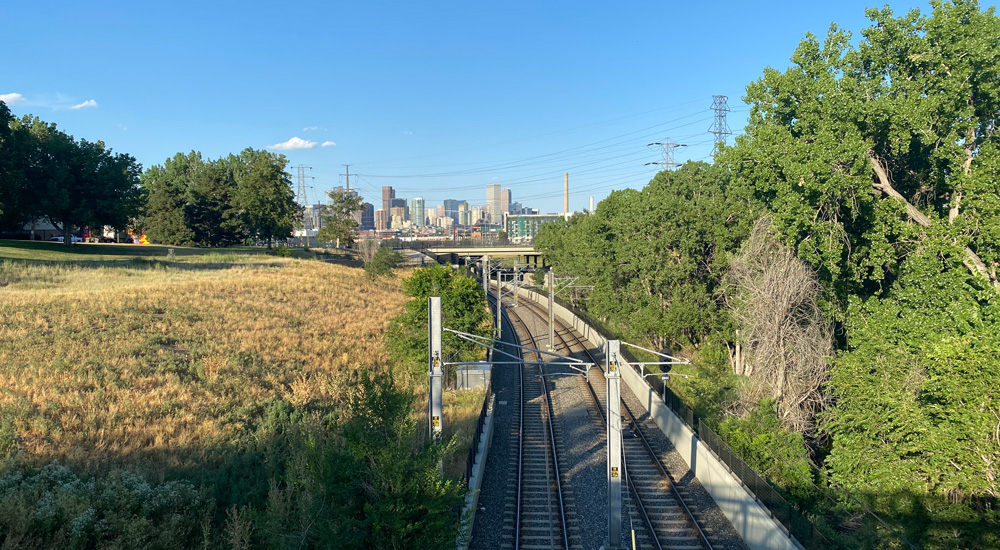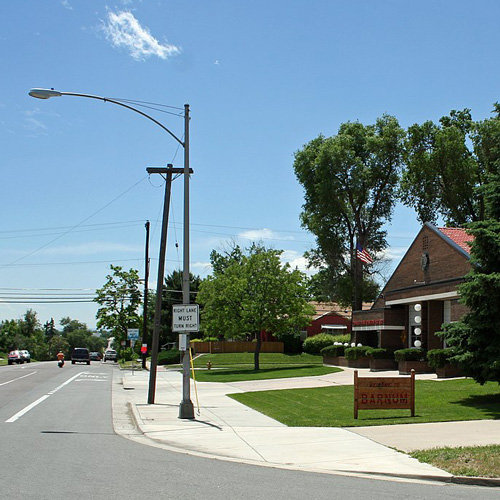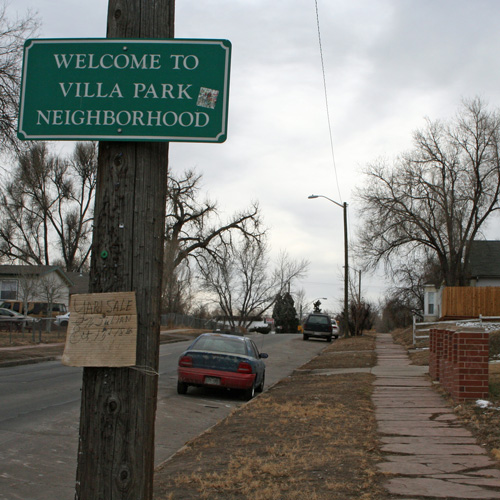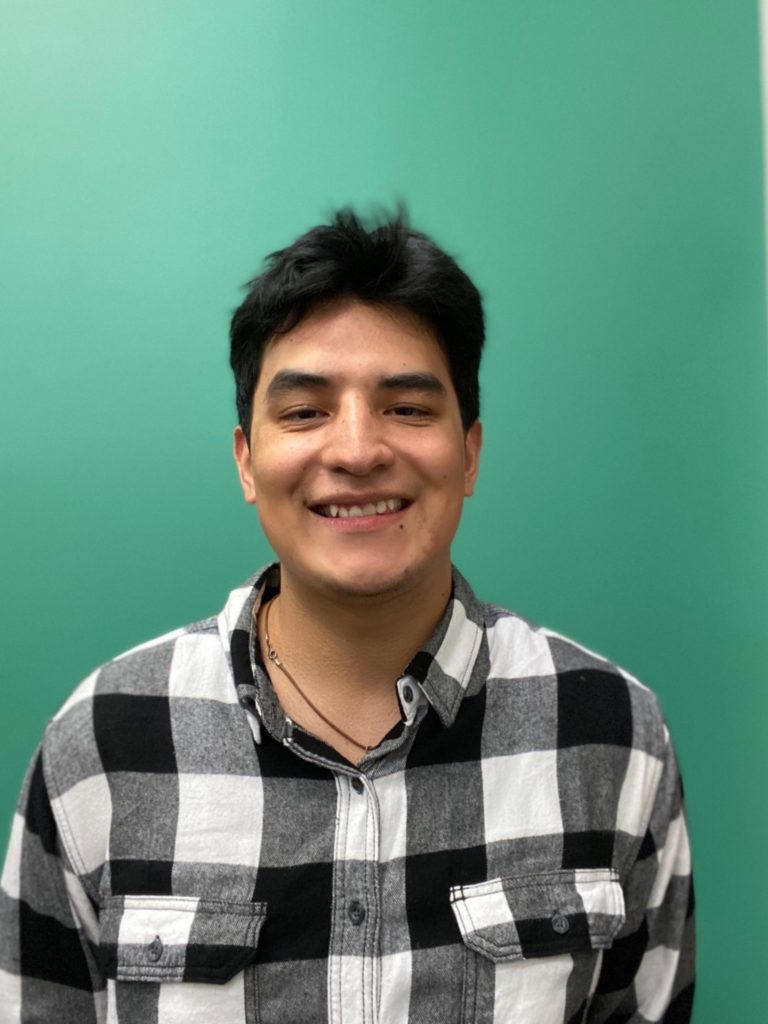Part of a special series highlighting College of Liberal Arts students and their summer internships with CSU Extension

Growing up in southwest Denver, Axel Sandoval Bravo could hardly miss the changes unfolding in his own and nearby neighborhoods of Villa Park, Valverde, Barnum, and Westwood. For much of the past two decades, redevelopment has boomed in Denver, adding lots of new homes and apartments, hip restaurants, and retail and office buildings. But that growth has also priced out families and individuals on fixed- and even middle-income salaries in much of west Denver.
“I’ve seen new four-story apartment buildings going up replacing homes and townhouses. It’s happening everywhere around the area where I was raised,” Bravo says. “Housing prices and costs are increasing, but wages aren’t keeping up. A lot of people have to leave.”
While Bravo saw the impacts of gentrification unfolding “everywhere” in Denver’s west-side neighborhoods, he also felt like this part of the city – predominantly Latinx with larger immigrant communities than other parts of Denver – was often overlooked in terms of the support for families and local businesses. In other words, there was a story to be told.
Bravo got an opportunity to tell that story through a CSU Extension internship this summer. Working with Assistant Professor of Geography Carrie Chennault and CSU Extension Denver County Director Dan Goldhamer, Bravo is reporting and producing a video documentary of long-term residents and families of Denver’s west-side neighborhoods sharing their perspectives and concerns about the changes affecting their communities.


“Extension has been embedded with Colorado communities for more than 120 years, and it’s key to the CSU mission,” Goldhamer says. But, historically, Extension’s efforts have been more focused outside the city and excluded marginalized communities and people of color. Extension projects like Bravo’s represent how Extension and CSU are “widening the circle of who we interact with,” Goldhamer says.
Chennault is a geographer who specializes in community-based participatory research to explore human-environmental geographic issues. Specifically, Chennault studies how marginalized groups encounter and resist environmental injustice through geography. Examples from her work include prison populations who lack access to healthy food or are forced to work in environmentally hazardous places, and communities of color that are fighting for better access to parks, greenspaces, community gardens, and grocery stores, and demanding government accountability for conditions of environmental injustices, such as “food apartheid,” pollution, and industrial waste.
“Southwest Denver is an important area of study,” Chennault says. “Larger social movements actively fighting against gentrifying North Denver urban development, evictions, rising costs of housing, and the displacement of Black and Latinx residents are well-established and known. But what is happening in southwest Denver neighborhoods and other parts of the city, where urban redevelopment arrived more recently and neighborhood activism has been less visibly organized?”
In Denver’s west-side neighborhoods, Chennault identified an opportunity to investigate the ties between the Latinx communities and “racialized spatial processes,” such as the lasting impacts of redlining – when people in poor neighborhoods were denied loans or insurance or other funds due to their location – and other actions and inactions that are defined as environmental racism.
“Years ago, when I started investigating the food geographies of communities of color in Dubuque, Iowa, I quickly found that neighborhood projects like new community gardens and greenspaces can backfire by contributing to “green” gentrification and displacement,” Chennault says. “Given the unprecedented rise of housing costs in the United States, geographers understand that food and environmental justice cannot be achieved without housing justice. We have to look at how these issues intersect, and how housing, food, land, and more broadly, claims to place, are a matter of community and individual survival.”
In search of a student intern who could apply ethnographic research methods with videography and media skills and someone with geography knowledge and an interest or familiarity with southwest Denver, Chennault found that Bravo was a perfect fit for the project. An interdisciplinary liberal arts major, Bravo has focused his program of study amid a few departments: Anthropology and Geography, Journalism and Media Communication, and Languages, Literatures, and Culture, where he studies Japanese.
“Axel brings the curiosity and courage needed to do community building,” Goldhamer says. His approach as documentarian was “key to showing that Extension doesn’t want to just show up with answers. This project was about listening and asking people to tell us their stories.”
In conducting his interviews, Bravo used ethnographic research methods from cultural anthropology and human geography. He also applied his journalism and videography skills to record and gather interview footage using two-camera setups – popular in documentary filmmaking – and to collect “b-roll” of scenes around the neighborhoods such as murals and street art and local traffic.


“It was exciting to be behind the camera, but the whole process and experience were exciting,” Bravo says.
Over the summer Bravo interviewed seven individuals from the west Denver neighborhoods, with sessions lasting up to 75 minutes. This fall, he is editing the footage to make a short documentary film. He is also creating an accompanying map to show Denver’s ethnic demographics, official neighborhood boundaries, and the types of services that align or exclude certain communities. His work tracks challenges to long-time residents but also positive changes afoot, including the new Youth Empowerment Center in Valverde and Re:Vision, a non-profit anti-food-deserts organization that is part of the Westwood Food Co-op.
“Axel is uniquely positioned to tell this story in a way that intimately resonates with the needs, desires, and hopes of his fellow community members,” Chennault said. “This documentary, unlike more traditional scholarly outputs, provides an opportunity for Axel to give back to his community and to advocate for their interests to city leaders and the broader public. We will present the results to academic audiences, too, but what I hope this project can show students is that research truly can be about making change in the world.”
“This documentary, unlike more traditional scholarly outputs, provides an opportunity for Axel to give back to his community and to advocate for their interests to city leaders and the broader public.” — Carrie Chennault
“I was given a lot of freedom, which was scary and challenging, but it also pushed me to become more independent,” says Bravo who is considering career paths in urban planning, international development, and media and documentary production after he graduates. In whatever way he applies his degree, Bravo knows one thing for sure.
“I love maps and geography in general. I like making movies and working with cameras,” he says. “And I know I want to make an impact.”
Internships: The Practical and Applied Side of the Liberal Arts
The CSU Summer Extension Internship program gives students the opportunity to take their research and expertise into the field to help communities across Colorado in the areas of Natural Resources and Sustainability, Food and Agriculture, Youth Development, Economic and Community Development, Health and Well-Being, and Emergency Planning and Resources.
In summer 2022, the College of Liberal Arts had 18 students participate in an Extension internship.